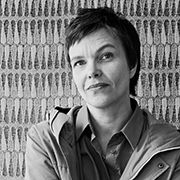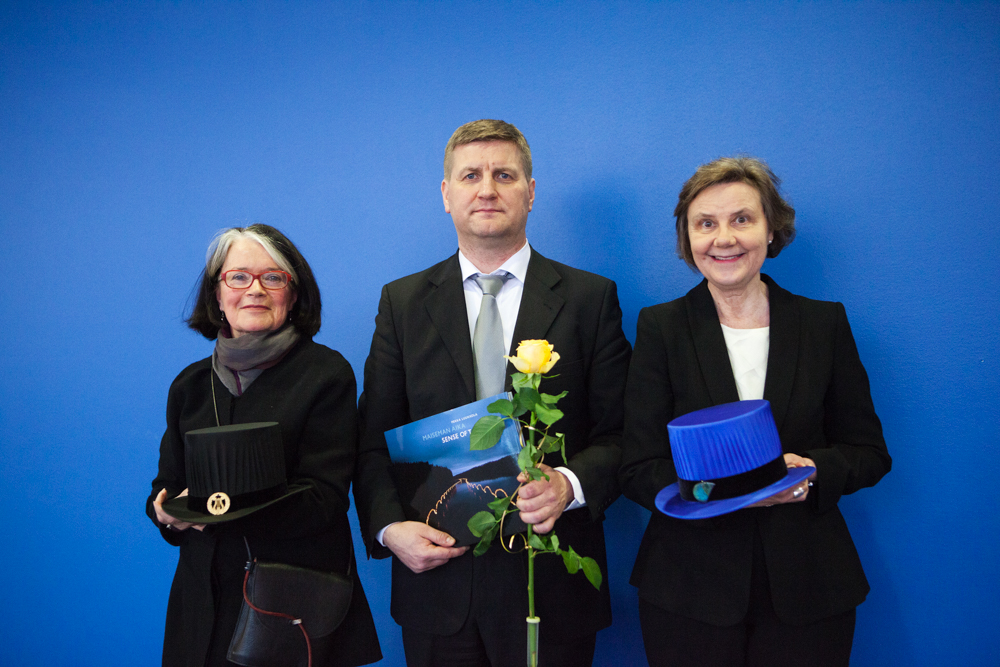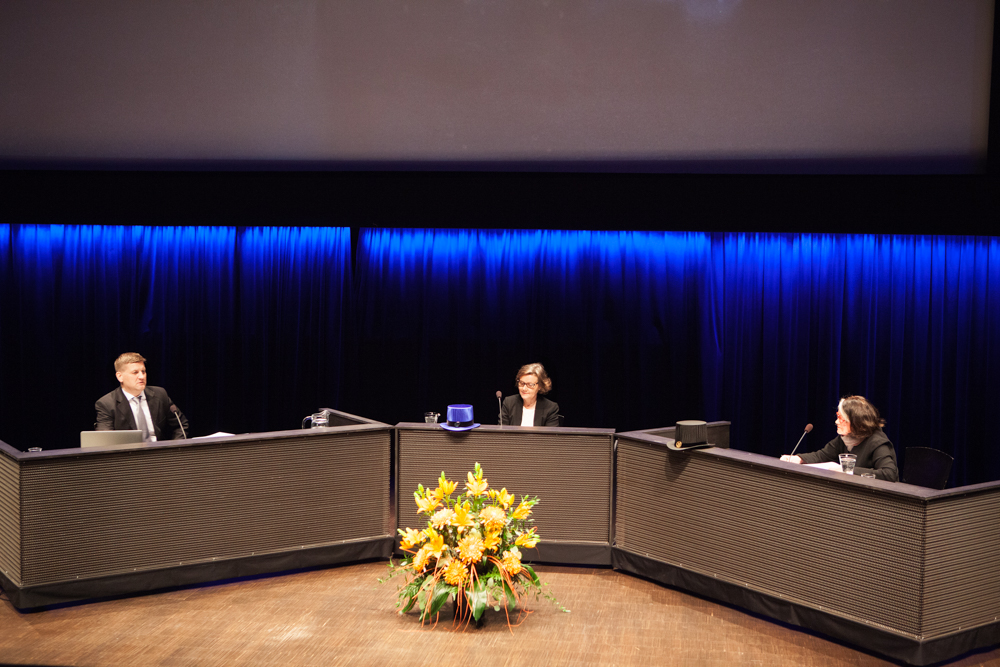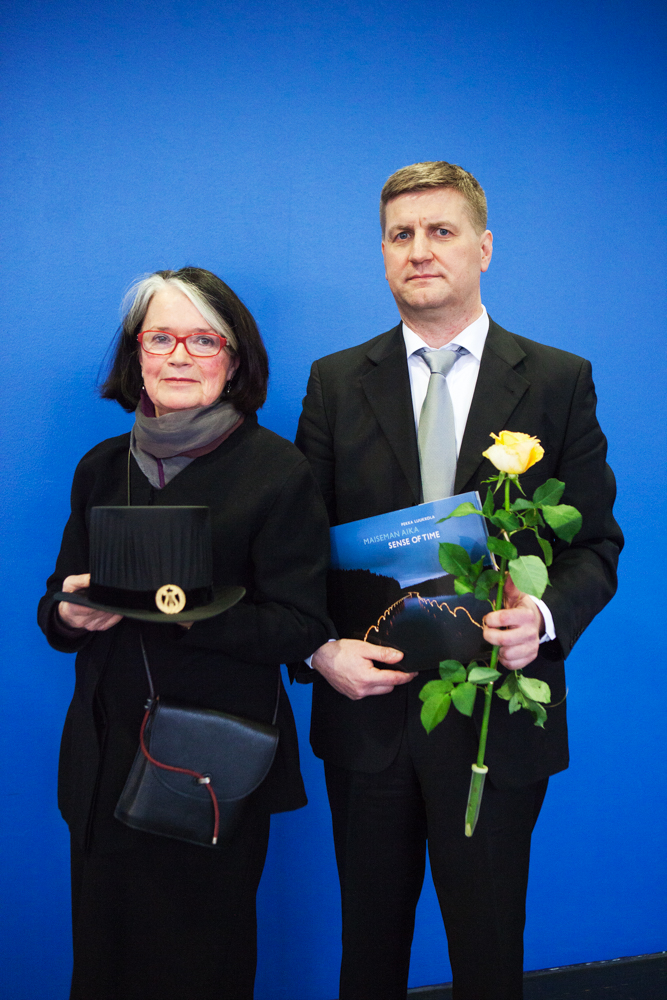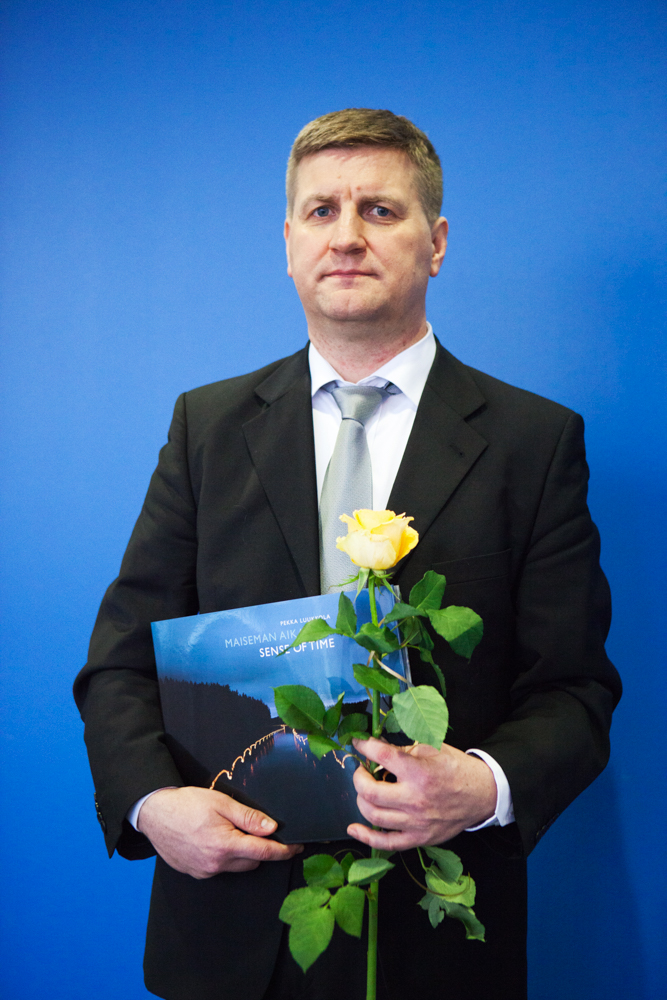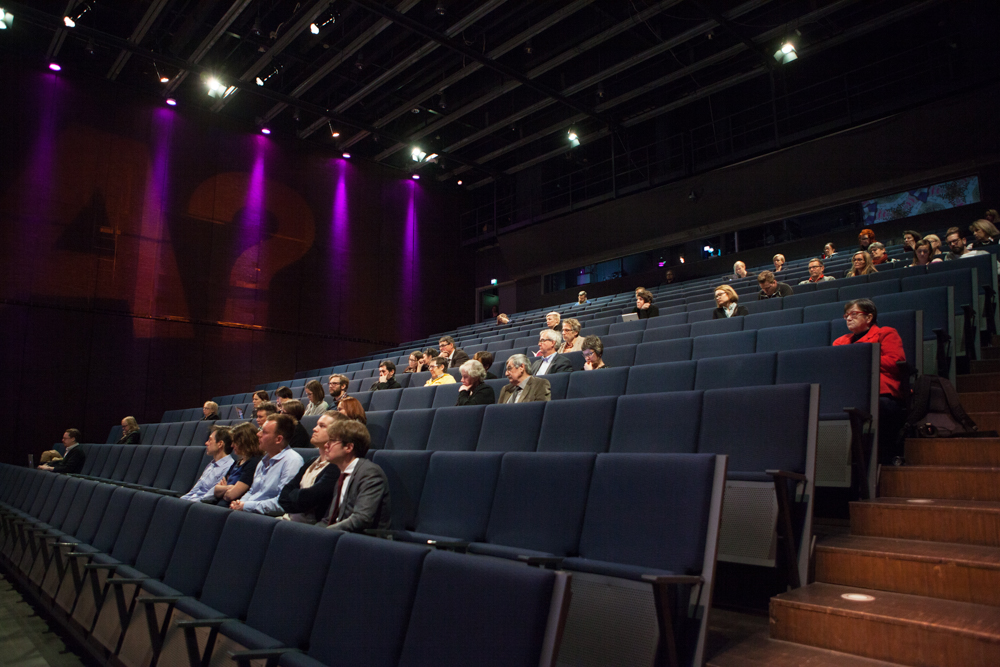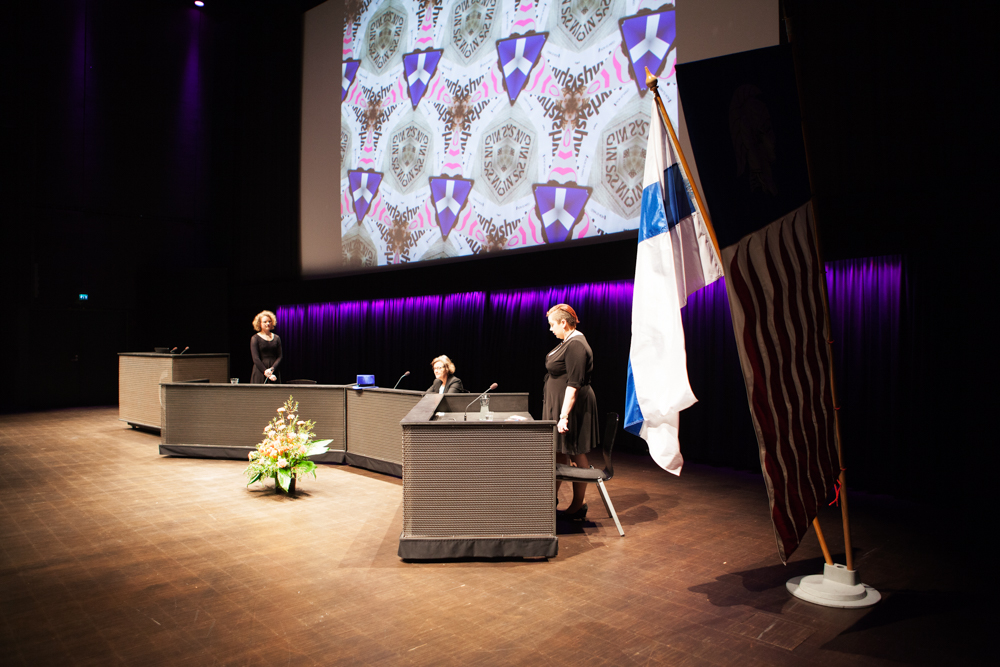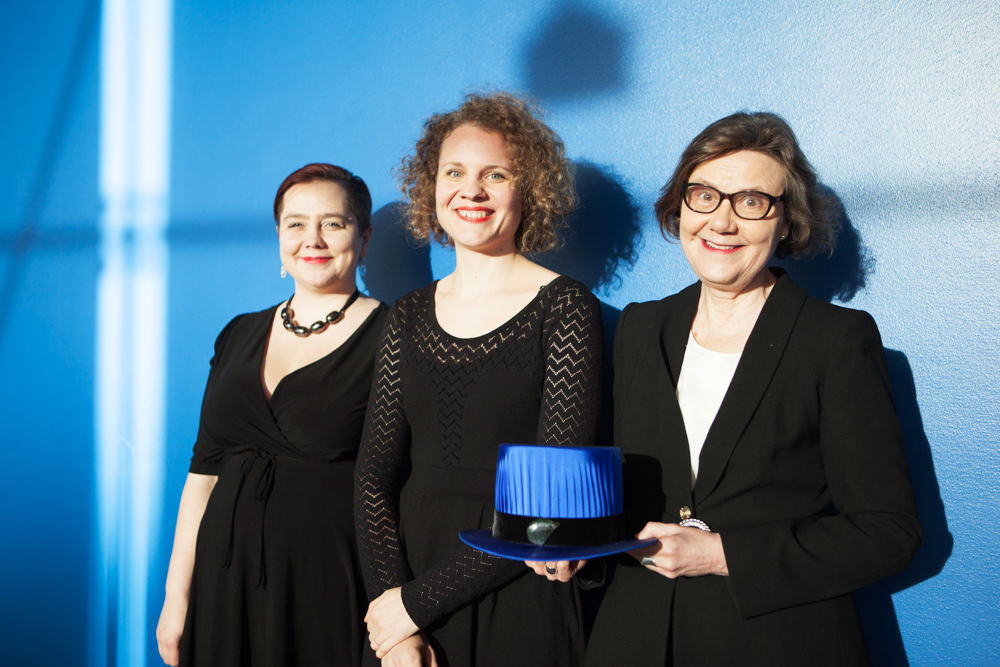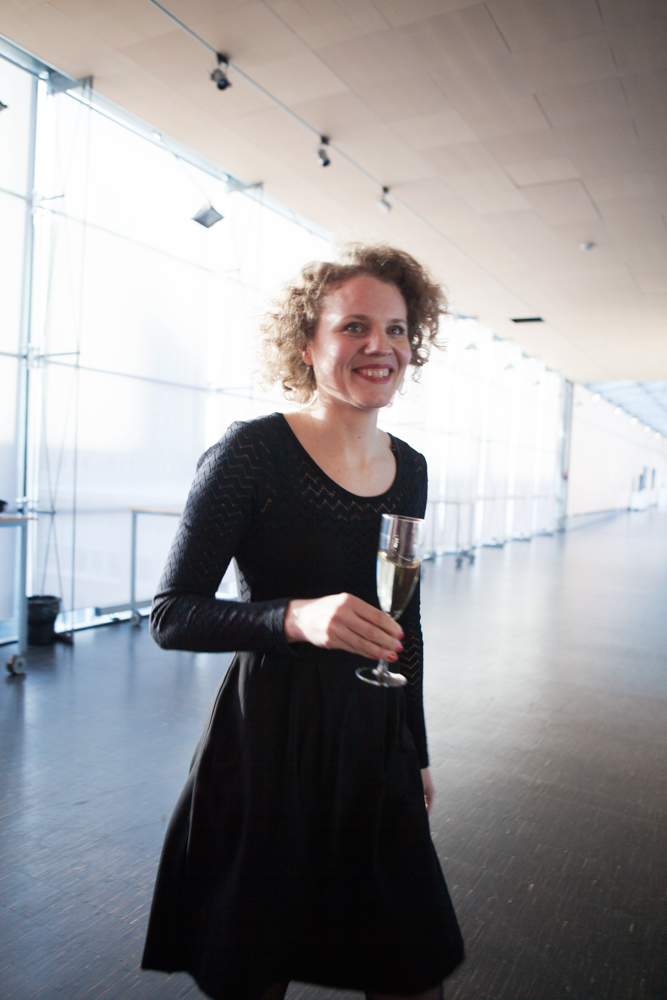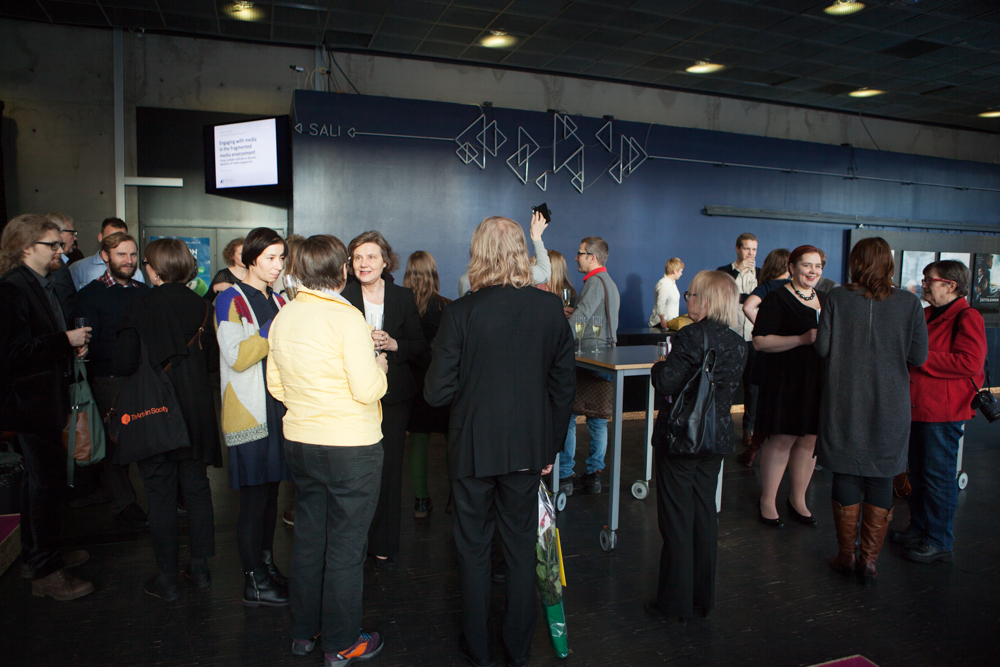ACM Journal on
Computing and Cultural Heritage
Special Issue on Digital Infrastructures for Cultural Heritage
New Deadline 30th April 2016
The digital component is now pervasive in Cultural Heritage research and practice. From the pioneering and sporadic applications of the last quarter of the 20th century, it has grown to become an essential for any CH investigation or management project. This development has led to the creation of a new interdisciplinary domain, the so-called Digital Heritage sector, and the need to support, structure, and manage the use of facilities, resources, services and applications no less than in other research domains, producing long-lasting infrastructures.
Such infrastructures may address specific aspects of digital heritage, such as visualization or documentation, or cover the full range of heritage-related activities, from investigation to conservation, management, education and communication. It is not by accident that recent large interventions such as the on-going “Pompeii Grand Project” start from a knowledge management plan and the digital data acquisition of all the archaeological remains.
Originally, digital heritage technology often comprised an exercise in the application of computer techniques originally conceived for other goals; the specific needs of such use has now dictated new requirements and has led to the development of new tools and methods tailored for heritage applications. The shift towards an application profile for heritage-oriented computer-based methods has implications for research infrastructures as much as for individual applications, and this is the scope of this special issue. Our goal is to collect papers dealing with innovative research on the many facets of digital heritage infrastructures, such as:
- Knowledge organization and semantic processing in Cultural Heritage and Digital Libraries
- Data management, search and mining
- Natural language processing
- Multimedia systems and applications for Cultural Heritage
- Big Data in Cultural Heritage applications
- Visual data acquisition, storage and display
- Visualization, both research- and communication-oriented
- Immersive environments, virtual and augmented reality
- User studies, such as museum and sites applications, human interfaces, interaction and usability
- e-Learning: Tools for Education, Documentation and Training in Cultural Heritage
As the intended audience includes both heritage researchers and professionals, and computer and information scientists, to be accepted papers will not only need to present innovative computer science content but also refer to a clear Cultural Heritage context where they have been, or are going to be, tested and evaluated. They should address a comprehensive framework – the infrastructure – rather than an individual application, unless the latter is the backbone of an infrastructure.
Accepted papers will be published in the ACM Journal on Computing and Cultural Heritage. Please follow the format instructions for the journal. When submitting, please select “Digital Infrastructure for Cultural Heritage” as the manuscript type in the journal submission system.
Important Dates (planned)
- Submission Deadline: April 30th, 2016
- Author notification: July 1st, 2016
- Revised Papers expected: Sept. 1st, 2016
- Final acceptance notification: November 2016
- Publication: Issue 1, 2017
- Massimo De Santo, University of Salerno, Salerno, Italy
- Franco Niccolucci, PIN, University of Florence, Prato, Italy
- Julian Richards, University of York, York, UK
- Massimo De Santo, University of Salerno, Salerno, Italy
Author Archives: Helinä Kuusela
CALL FOR PAPERS Transactions on Social Computing A New ACM Journal
Transactions on Social Computing
A New ACM Journal
Editor-in-Chief: David McDonald, University of Washington, USA
INFORMATION FOR CONTRIBUTORS
ACM Transactions on Social Computing (TSC) seeks to publish work that covers the full spectrum of social computing including theoretical, empirical, systems, and design research contributions. The editorial perspective is that social computing is fundamentally about computing systems and techniques in which users interact, directly or indirectly, with what they believe to be other users or other users’ contributions. TSC welcomes research employing a wide range of methods to advance the tools, techniques, understanding, and practice of social computing, including: theoretical, algorithmic, empirical, experimental, qualitative, quantitative, ethnographic, design, and engineering research. Social computing will continue to be shaped by foundational algorithmic, econometric, psychological, sociological, and social science research and these broad based perspectives will continue to have a profound influence on how social computing systems are designed, built and how they grow.
TSC particularly solicits research that designs, implements or studies systems that mediate social interactions among users, or that develops or studies theory or techniques for application in those systems. Examples of such social computing systems include, but are not limited to: instant messaging, blogs, wikis, social networks, social tagging, social recommenders, collaborative editors and shared repositories.
The scope of research covered within TSC includes:
- Understanding motivations for contributing to and participating in social computing systems
- Tools that help users understand the individual and collective roles of participants in social computing systems
- The influence of scale; how differing scales of human and machine participation changes the designs and adoptions of systems
- Micro-tasking systems and techniques for decomposing complex activities into recomposable tasks that can be completed by mixtures of people and machines
- System architectures and infrastructure for developing social computing platforms
- Foundational algorithmic analysis that accounts for human and machine data and runtime complexity
- The roles of artificial agents in social computing spaces, the design, creation, and management of those agents relative to social interactions within a social computing system
- Research on privacy mechanisms — both formal and interactive — related to social computing data and systems
- Research on algorithms for personalization within a social computing context, including recommender systems and social matchmaking systems
- Research on crowdsourcing, collaborative content creation, productive social gaming, and other mechanisms and applications of aggregating individual contributions for a collective goal
- Research studying communications patterns in online communication forums
- Ethnographic case studies of social computing in situ
- Algorithms for extracting knowledge from social computing usage data and artifacts
Associate Editors
- Michael Bernstein, Stanford University, USA
- Peter Brusilovsky, University of Pittsburgh, USA
- Meeyoung Cha, KAIST, Korea
- Yiling Chen, Harvard University, USA
- Ed Chi, Google, USA
- Kevin Crowston, Syracuse University, USA
- Laura Dabbish, Carnegie Mellon University, USA
- Steven Dow, University of California, San Diego, USA
- Boi Faltings, École Polytechnique Fédérale de Lausanne, Switzerland
- Rosta Farzan, University of Pittsburgh, USA
- Sue Fussell, Cornell University, USA
- Liz Gerber, Northwestern University, USA
- Arpita Ghosh, Cornell University, USA
- Ramesh Jain, University of California, Irvine, USA
- Karrie Karahalios, University of Illinois, USA
- David Karger, MIT, USA
- Emre Kiciman, Microsoft Research, USA
- Joe Konstan, University of Minnesota, USA
- Cliff Lampe, University of Michigan, USA
- Huan Liu, Arizona State University, USA
- David Millen, IBM Research, Brazil
- Marc Smith, Connected Action, consulting, USA
- Daniel Zeng, University of Arizona, USA
Visual Communication Design DA seminar, 10 March at Miestentie
Visual Communication Design DA seminar
Seminaarin vieraana on professori Juha Suoranta Tampereen yliopistosta.Hän ohjaa Arja Karhumaan väitöstutkimusta “Graafinen suunnittelu kirjoittamisena: Arkitekstien kätkeytynyt visuaalisuus”Keskustelemme seminaarissa aiheesta”Tekijä-tutkijan positio tutkimuksen teossa ja ammattikentällä”.
PhD summer school on Theatre in Design
University of Southern Denmark will organise a NORDES PhD summerschool on Theatre in Design
If you are interested in participating, please send us a quick mail with a few lines about yourself and which track you would join. This will be non-committal but very helpful for our planning.Kind regardsJacob BuurProfessor, research directorSDU Design ResearchUniversity of Southern DenmarkUniversitetsparken 1, DK-6000 Kolding, Denmarkph: +45 6550 1661
Helsinki Photomedia 30.3-1.4.2016: Key notes by Prof. Geoffrey Batchen, artist Annika von Hausswolff and Prof. Liz Wells
The third international photography research conference Helsinki Photomedia themed Photographic Agencies and Materialities is happening 30.3.-1.4.2016 in Aalto Arabia campus, Hämeentie 135 C. In addition to over a hundred presentations and discussions, we are proud to present three very exiting key notes by Prof. Geoffrey Batchen (NZ), artist Annika von Hausswolff (SE) and Prof. Liz Wells (UK).
Key notes are open to anyone, warmest welcome!
Wed 30.3, Sampo auditorium 13.15-14.15
Geoffrey Batchen: In Absentia – Material and Politics in Cameraless Photography
“How can a photograph of nothing—of nothing discernable or apparently significant—be said to offer some useful political purchase on the world it inhabits? How can a photograph that represents, but does not depict, a given situation be freighted with historical knowledge and import? Confining itself to examples of cameraless photography, from the 1830s to now, my presentation will ask these questions with a view to determining a politics for such photographs in the present. In fact, given our contemporary digital context, cameraless photographs assume that photography is always already a politics; to engage the visual and chemical materiality of the photograph is to dispute and challenge that fixity of that politics. Apart from anything else, to make such photographs returns photography to a unique, hand-made craft and away from global capitalism and its vast economies of mass exploitation. Not that these photographs are innocent; on the contrary they are often generated by actions that are toxic, radioactive, enigmatic, violent, dangerous. Nor are they “abstract.” Instead, I will argue, they redefine both the nature of photography’s realism and its potential as a political agent.”
Professor Geoffrey Batchen teaches art history at Victoria University of Wellington in New Zealand, specializing in the history of photography. His books include Burning with Desire: The Conception of Photography (1997), Each Wild Idea: Writing, Photography, History (2001), Forget Me Not: Photography and Remembrance (2004), William Henry Fox Talbot (2008), What of Shoes? Van Gogh and Art History (2009), Suspending Time: Life, Photography, Death (2010) and More Wild Ideas (forthcoming in Chinese, 2015). He has also edited Photography Degree Zero: Reflections on Roland Barthes’s Camera Lucida (2009) and co-edited Picturing Atrocity: Photography in Crisis (2012). In April 2016, his exhibition, Emanations: The Art of the Cameraless Photograph, will open at the Govett-Brewster Art Gallery in New Plymouth, New Zealand. A book with the same title will be published by Prestel.
Thu 31.3, Sampo auditorium 15.45 – 17.00
Liz Wells: Image as Agent – place, materiality and the photographic
The relation between what we see and what we know is never settled.
John Berger, 1972
“As agents of what once was, photographic images have a complex and fluid relation to sites and histories. Yet, whether documentary in mode, romantic, abstract or critically realist, pictures influence our sense of place.
Focussing on land-based practices, this presentation re-visits questions of meaning and interpretation as related to images, places, memory, materiality and environmental mutability.”
Liz Wells writes and lectures on photographic practices. She edited Photography: A Critical Introduction (2015 5th ed.) and The Photography Reader (2003, new edition due 2017); she is also co-editor for photographies, Routledge journals. Publications on landscape include Land Matters, Landscape Photography, Culture and Identity (2011).
Recent exhibitions as curator include: Light Touch, Baltimore Washington International Airport (February 12th – June 21st 2014); Futureland Now – John Kippin, Chris Wainwright (Laing Gallery, Newcastle, September 15 2012 – January 20 2013), Sense of Place, European Landscape Photography (BOZAR, Brussels, 14 June – 15 September 2012), and Landscapes of Exploration, British art from Antarctica (Plymouth, February/March 2012; Cambridge, October/November 2013; Bournemouth, January/February 2015).
She is Professor in Photographic Culture, Faculty of Arts and Humanities, Plymouth University, UK, and co-convenes the research group for Land/Water and the Visual Arts. www.landwater-research.co.uk She is a visiting professor, Belfast School of Art, University of Ulster, and also an elected member of the Board of Directors, Society for Photographic Education.
Fri 1.4. Sampo auditorium 09.00 – 10.15
Annika von Hausswolff: The Construction of a Breakdown
“For the last 25 years I have been occupied with photography. Starting out as a documentary-photographer-wannabe I have explored staged photography, photography as conceptual sculpture, recently ending up in the play of appropriation.
As long as we know of, mankind has been prone to represent reality. The desire to relocate the mental experience of the world, to project it outside the subject, seems to be our destiny. To substitute outer realms in order to understand it, change it, dominate it or simply inscribe ourselves into its order. To create meaning and structure.
What are the similarities and differences between analogue and digital technique on a functional, philosophical and psychoanalytical level? Perhaps it is obsolete to even speak about images today, should we instead use words as information, meaning or code?
Inspired by the work of Didier Anzieu, the french psychoanalyst who´s book The Skin Ego in my mind has a strong connection to photography, I will present some of my photographic projects and relate them to the notion of materiality.”
http://www.annikavonhausswolff.com
Annika von Hausswolff was educated at Akademin för fotografi at Konstfackskolan in Stockholm in the early ninities. She belongs to a generation of women photographers that problematised and elaborated the scene of visual art and photography in Sweden at the time. Working with staged photography, borrowing the semantics from various photographic genres such as documentary-, crime-, and commercial, she has exhibited extensively in the Nordic countries and abroad. For example at the biennials in Venice and Sao Paulo, Guggenheim Museum, Fotomuseum Winterthur, Magasin 3 Stockholm Konsthall amongst them all. For several years she was professor at Högskolan för Fotografi (now Akademin Valand) at Gothenburg University teaching students at master level. She is currently working toward solo exhibitions at Gallery Andréhn-Schiptjenko in Stockholm and Hasselblad Foundation in Gothenburg and will also be a guest professor at the University of Arts in Helsinki in the fall of 2015.
Twitter @Photomedia2016
#helsinkiphotomedia
Mlab DA seminar Thu 17.3.2016
Second Mlab DA seminar of the spring 2016
Thu 17.3 in room 429,
Miestentie 3B, 5-7pm, welcome!
Teemu Leinonen will tell about the design research carried out in the Learning Environments research group (http://legroup.aalto.fi)
Eva Durall: Feeler: designing for reflection through EEG data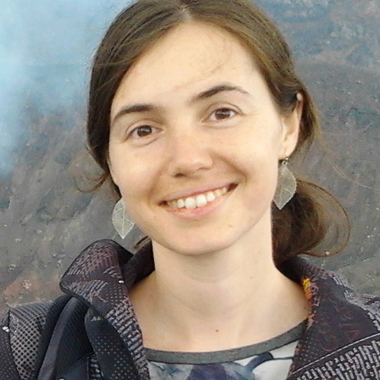
In this presentation I argue that common media behaviors such as multitasking interfere meaningful learning practices like reflection, which requires focus and attention. During the session, I will summarize key ideas regarding reflection and awareness in learning and present Feeler, a prototype that seeks to foster awareness and reflection about mental states when performing academic tasks. Feeler uses a wearable device for self-monitoring electroencephalographic data and asks students to follow a specific learning script through a set of smart objects. These tools communicate with a digital app that visualizes students’ brainwave data once the study session has concluded. The research hypothesis about the Feeler context of use have been tested through a proof-of-concept role prototype. To date, six tests has been conducted with higher education students. Feeler tests data has been analyzed and used to identify technological and educational affordances connected to reflection in the prototype design. Based on Feeler’s analysis, I conclude that smart objects and wearable devices that monitor EEG data are valuable assets for fostering reflection due to its potential for provoking feelings and creating experiences. In regard to the prototype’s educational affordances, Feels affords sense-making and knowledge building, reflection, inquiry, and transformation and change. The identification of these affordances is key for the development of learning technology that supports reflection and awareness.
Mlab DA seminar Thu 25.2.2016
First Mlab DA seminar of the spring 2016 is this Thu 25.2 in room 429, Miestentie 3B, 5-7pm, welcome!
Eunice Sari: Transforming Learning with Mobile Technology
Jukka Purma: Kataja – Visualizing Biolinguistics
 Eunice Sari: Transforming Learning with Mobile Technology
Eunice Sari: Transforming Learning with Mobile Technology
This presentation discusses various mobile learning projects and their contributions to the development of mobile teaching and learning framework in Indonesia.
With an aim of redefining a learning experience through the use of mobile technology in teaching and learning, I have conducted a number of studies between 2006 and 2016 in both developed and developing countries to investigate user interaction and attitude toward mobile technology for teaching and learning. The studies apply design and action research approaches in order to dynamically design and develop good teaching and learning experience using mobile technology. In this presentation, I will present several projects conducted between 2006-2016 that involved the use of mobile technology to support teaching and learning in both developed and developing countries and some lessons learned for the development of mobile teaching and learning framework for Indonesia.
The first case study discusses the early adoption of mobile technology in early 2006. I conducted a series of feasibility studies in Thailand, Indonesia, Malaysia, Singapore, Denmark and Finland. Employing ethnographic-inspired user research approach (i.e. contextual inquiry, participant observation, shadowing), interview, focus group and cultural probes, I gained rich insights from students, teachers, lecturers and other relevant stakeholders from various educational institutions about their perspective on the use of the mobile technology as a tool for teaching and learning. The concept of mobile learning was still a distance for majority of the users, while there is a large adoption of feature phones across the region, particularly in Indonesia as the 4th largest mobile market in the world.
The second case study discusses the changing of the landscape of Information Communication Technology (ICT) started around 2007-2008 in Southeast Asia. The general landscape for smartphones had grown significantly and the social media started to become a new common basic requirement for mobile end-users. This significant development influenced the adoption of mobile technology in education field. However, the education market was in general still unsure and undecided market due to cost of the mobile data, education and social ethics. In this project, a series of online activities to educate teachers and school leaders on the use of ICT in teaching and learning. Social media was employed in the development of online learning community to socialize the concept of professional learning and the use of mobile technology was encouraged to support the flexible learning, especially for educators who work in rural and remote areas in Indonesia.
The third case study started in 2013, where I investigated the use of mobile technology as a learning tool for large size flipped learning multidisciplinary classes at a university in Australia. The project has been repeated for twice from 2014-2015 and now is entering the third year experiment with some modification on the mobile automated assessment (2016-2017). While the context is in Australia, there is a lot of lessons that can be learnt and transferred from this project for developing a mobile teaching and learning framework in Indonesia considering more than half of the participants in the projects are from Asia and they have a lot of similarities with students in Indonesia.
In addition to this project, I also conducted a number of smaller studies on mobile learning. The first one is the study at primary level of education on how mobile technology could be implemented to engage students and teachers in classroom teaching and learning, and how participatory design process can be implemented to engage a teacher, a UX Designer and an Instructional Designer, as well as students at different levels and phases of design process to create good learning experience.
Jukka Purma: Kataja – Visualizing Biolinguistics
This presentation focuses on section ‘Tools for syntacticians’ of my thesis work ‘Kataja – Visualizing Biolinguistics’. The thesis includes production of visualization software Kataja and a written part. Kataja is a digital instrument for researching syntax in biolinguistics, one theoretical direction in linguistics. The design of the instrument depends heavily on understanding of the current theory and possible directions it may take, so most of the thesis is about syntactic theory and hypotheses employed in biolinguistics, and how to turn them to visual interactionable components in software. Aside those concerns, the thesis aims to position Kataja as a digital research instrument by examining history of research instruments in general and diagramming tools in linguistics.
The study of diagramming tools shows that development of software tools, especially parsers and treebanks in linguistics has had significant role in separation of computational linguistics from generative linguistics: in general, when a new software tool is presented as an intended goal of research, the scope of its usefulness has been broader than just the theoretical questions that inspire the tool. These practical promises of usefulness can take over the tool development. Development of parser tools broke out from their original theoretical questions into parsing by any means necessary, creating fields of computational linguistics and natural language processing. Tree diagrams were continuously used for testing, teaching and debugging parsers, while many assumptions behind these diagrams were rejected or replaced in generative theory.
Viewing from generative tradition, diagramming tools employed in parser and treebank development belong into unfamiliar tool chains. To benefit from these tools, a computational linguist’s approach to research would need to be emulated. Tree drawing tools developed in generative tradition are few and they are designed to support introductory courses omitting recent approaches for tree construction, namely those based on operation Merge. The divergence of computational linguistics from generative linguistics teaches that new tools import some aspects from the theory they are built upon, but assumptions of the theory that are not made explicit in tool are easy to misconstrue.
With digital research instruments, the design space of what is explicitly labeled or immutable, and what is left out, or for users to define, is larger than with analog instruments. Biolinguistics needs a visualization tool that puts the operation Merge into focus, as it is in the recent theoretical work. As long as Merge is in center, misconstructing or reinterpreting other aspects of theory is not a risk for advancement of the biolinguistics. Emphasis on Merge is also necessary to escape from usage assumptions of computational linguistics’ tool chains: if the tool supports exploring properties of Merge-based structures, it requires a new take on how this task would connect to other tools.
Pekka Luukkolan väitös “Laadun taika. Valokuvan teknistaiteellisen laadun tekijälähtöinen tutkimus”
Pekka Luukkola esitti tarkastettavaksi väitöskirjansa Laadun taika. Valokuvan teknistaiteellisen laadun tekijälähtöinen tutkimus perjantaina 12.2.2016 klo 12 Aalto-yliopiston taiteiden ja suunnittelun korkeakoulussa.
Vastaväittäjä FT, valokuvaaja Leena Saraste
Kustos professori Merja Salo, median laitos
Valokuvan laatu on yleisesti käytetty mutta kuitenkin harvoin määritetty käsite. Väitöstutkimus Laadun taika käsittelee valokuvan laatua laajasti niin kuvatekniikan kuin valokuvataiteenkin näkökulmasta ja lähestyy kuvien laatuun vaikuttavia tekijöitä monilla eri tutkimusmenetelmillä. Työssä selvitetään muun muassa, mistä osatekijöistä valokuvan laatu rakentuu ja millä keinoilla laatua voidaan parantaa kuvanvalmistusketjun eli kuvaprosessin eri vaiheissa.
Tutkimuksen aikana tehdyt kokeet ja mittaukset osoittavat, että teknisesti erinomainen kuvanlaatu voidaan saavuttaa paneutumalla huolellisesti kuvaprosessin kaikkien vaiheiden laatuun ja yhdistämällä analogista ja digitaalista tekniikkaa. Tutkimuksen tuloksena on lisäksi syntynyt laatukaavioita, jotka jäsentävät uudella tavalla valokuvan laatuun vaikuttavia lukuisia taiteellisia ja teknisiä seikkoja.
Tutkimukseen sisältyy myös taiteellisia produktioita: kolme valokuvanäyttelyä sekä 144-sivuinen valokuvateos Maiseman aika – Sense of time. Näyttelyt ovat olleet esillä Taidekeskus Retretissä, Galleria Heinossa ja Tampereen taidemuseossa. Teosten valmistuksessa Luukkola on soveltanut tutkimustyön aikana syntynyttä tietoa ja menetelmiä. Tutkimuksen tuloksena on syntynyt yli 70 uutta teosta, joita on huomioitu muun muassa Fotofinlandia- ja Ars Fennica –kilpailuissa ja niitä sisältyy keskeisten suomalaisten taidemuseoiden kokoelmiin.
Valokuvat (c) Laura Nissinen
Thesis Design now available as an e-book
Thesis Design Research – Meets Practice in Art And Design Master’s Theses by Marja Seliger and Hahn Youg-ae is now available on App Store and Google Play!
App Store: https://itunes.apple.com/us/app/thesis-design-research-meets/id1068786837?mt=8
Google Play: https://play.google.com/store/apps/details?id=fi.unigrafia.thesisdesign
More info on the book in Aalto ARTS bookstore:
https://shop.aalto.fi/p/831-thesis-design/
Photos from the publishing party 29.11.2015
Engaging with Media in the Fragmented Media Environment. Using multiple methods to discover elements of media engagement – Riitta Tammi 4.2.2016
Engaging with Media in the Fragmented Media Environment. Using multiple methods to discover elements of media engagement – Riitta Tammi 4.2.2016
Riitta Tammi defended her dissertation Engaging with Media in the Fragmented Media Environment. Using multiple methods to discover elements of media engagement on Thursday 4 February 2016 at noon in Media Centre Lume, Sampo-hall. The study explores fragmentation of media use, and the reasons behind and ways of engaging with media.
Opponent: Pille Pruulmann-Vengerfeldt, Associate Professor in media studies, University of Tartu.
Custos: Prof. Merja Salo, Aalto University, Department of Media.
The study explores fragmentation of media use, and the reasons behind and ways of engaging with media. The underlying assumption is that as media landscape has fragmented and the amount of media content has multiplied, it is increasingly important to examine those experiences that are associated with the most important media titles, and how media use intertwines with the practices of everyday. Previous studies of fragmentation of media use and media selections often limit the amount of media, or focus on only one genre, such as, news. The novelty of this study is starting from the perspective of the readers, viewers, and users. The media use of five participant groups was examined using four qualitative methods: online media diaries, media landscape interviews, ethnographic visits and reading aloud interviews.
The fragmentation of media use was studied in personal media landscapes, where the participants map all media titles they use frequently. Fragmentation emerged on the one hand as a great number of media titles, and on the other, as the amount of individually named media titles, referring to individualisation of media choices.
The results suggest that fragmentation of media use and engaging with media are closely intertwined, and it is justified to approach them from the perspective of the user. First, even though people come across dozens of media titles on a weekly basis, the engaging ones are allocated time and used concentratedly. Second, as life phases and interests change, also personal media landscapes reshape frequently, even though media routines are strong. Finally, changing media practices enable increasing encounters with new media content and titles, whereupon supplementing the personal media landscape – or replacing disengaging titles – is easy.
Photographs (c) Laura Nissinen





